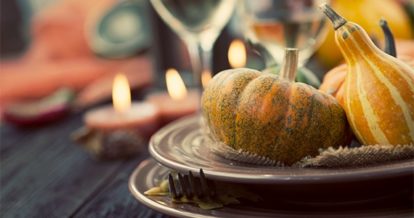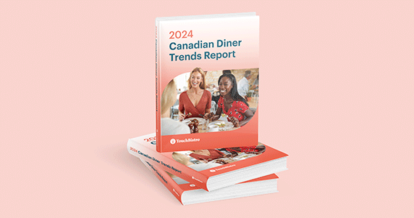Your restaurant’s menu should always be changing. Yes, there’s that old saying that goes, “Don’t mess with a good thing.” Thing is, that “good thing” now changes from one day to the next. Monday it’s poke. Tuesday it’s sushi burritos. Wednesday, ramen. Won’t somebody think of the chicken fingers and fries?!
Today we’re going to untangle the complexities of changing up your restaurant menu. We’ll show you how and when you can make changes to maximize sales, all while making sure the process is a breeze.

Strategic menu design has been proven to grow profits by 15%.
Types of Change
Let’s get one thing straight: no one is suggesting you need to throw away your bestsellers every time you release your summer menu. Keep those babies and throw away the bathwater! Of course there are some situations that call for a complete menu reconstruction, like if you’re a farm-to-table restaurant and 50% of your ingredients go out of season. But some restaurateurs may just want to axe one low-selling dish in favor of a crowd-pleasing trend. Restaurant menu engineering can help you decide on the types of design changes you should be making to your menu.
Here are four ways to change your menu:
1. Full remodeling: A complete reworking of the wheel, full remodeling involves revamping your menu from scratch. This rebuild works well for small, boutique restaurants who have specialized menus that go out of season frequently, like farm-to-table restaurants.
2. New items: Adding new items is a great way to add diversity without getting rid of what’s working. A new menu item can brighten up your business, kind of like a pop of colour would for your decor.
3. Replacements: While you’d probably would never swap out your plow horses or your stars, you’ll definitely swap out old, tired menu items for new trendy dishes. Not sure what we mean by plow horses or stars? Check out our post, “How to Optimize your Restaurant Menu to Increase Sales”.
According to the Menu Cover Depot, you can determine which menu items fall into the appropriate category by doing an analysis on profitability and popularity. The categories are:
- Stars: items that yield both high on the profitability scale and are also highly popular dishes.
- Plow-horses: dishes that might have low profitability but they rank high in popularity.
- Puzzles: the plates that appeal to only a certain few, but are highly profitable.
- Dogs: dishes that have both low profitability and low popularity.
4. Redesign: What’s in a name? Well, which would you prefer: sushi or cold, dead fish? Sometimes a little wordsmithing goes a long way. If you know your dishes are trendy but not performing as well as you’d like, try changing the dish’s name or description and monitor the metrics closely to see if there’s a increase in sales.
Why Change?
1. Reports are telling you to: With robust analytics that give you a range of dynamic reports, you can gauge the effectiveness of dishes by sales, cost, and profitability. If the numbers are low, it’s time to replace those dogs with a star.
2. There’s a more cost-effective alternative: Turn any plow horse into a star by finding ways to cut down on the cost of ingredients, like using in-season produce. Cost efficiency is as paramount to profitability as sales. Thus, if there’s an equally as delicious alternative menu item because of seasonal ingredients or the advent of a new recipe, you might want to swap out a low performer for a dish that costs you less to make.
3. There’s a trending dish in your niche: Whether it’s sushi burritos, poke bowls, or ramen, tap into the power of trends by testing them on your summer menu or as a special. While the jury is still out as to whether these trends will reach “calamari staple status”, trends do whet the consumer palette, and you can almost guarantee they’ll be a star for the season.
4. To keep customers comin’: Change is good. When you change, you’re perceived as fresh and innovative, while potentially attracting a new crowd. “Same ol’, same ol’” is nice, but eventually even the most faithful recurring customers will want to try something new.
How Often Should I Change?
While there’s no one-size-fits-all rule for every restaurant, seasonal changes, big or small, are your best bet to staying relevant in a competitive landscape. For instance, during the summer the human body generally craves cooling, water-retaining foods, like cucumber and watermelon, and spicy foods, like hot chilis. In the winter the body craves warm, hearty foods. Why not give those bodies what they want by changing your menu to fit the cravings of the season?
But What about Consistency?
There’s much to be said about consistency: stars are stars for a reason! It would be a huge loss to axe a consistent performer for the sake of novelty. Also, hot new menu items should still keep to your restaurant’s brand. Here are a few general rules to maintain consistency in your menu:
- Keep your staple items the same
- Feature a few seasonal dishes
- Notify your customers when the menu changes
- Market new dishes as “seasonal offerings”
- Maintain consistency elsewhere
How Can I Make Change Easier?
1. Run a special menu: A great way to adjust for seasonality or trends is to run limited time menu items on a special menu. Special menus are also a great way to gauge the success of a dish before it becomes permanent. Look to our Ultimate Guide to Menu Design to identify the spot on your menu that will best attract your customer’s eye.
2. Use printable menus: Swap the hassle and expense of heavy duty, laminated, complicated menus for a simple recycled paper menu. Especially if you’re changing your menu frequently or using a special menu in addition to your regular menu, a printable menu is easy to change and recycle consciously.
3. List specials on a chalkboard: An easy way to highlight seasonal specials is to advertise them on a chalkboard. Not only are chalk boards easily changed, but they also allow you to get creative and add a personal touch.
4. Upgrade to digital menu boards: Digital menu boards allow you to update information with the click of a button. Ensure your specials and new stars are called out from the rest of the menu board, in prime real estate.
5. Update and advertise new items on digital platforms: The majority of customers will look at your menu online before walking through your door. Make sure to have those enticing seasonal specials listed in plain sight on your website and on your menu. Use rotating banners on your homepage and update PDFs and live menus with specials. Also promote changes on your Facebook and Instagram pages to drive interest and sales of a particular item.
Ch-ch-ch-ch-changes. When strategically executed, menu changes have the power to revitalize your business, optimize your selling power, and persuade customers to return. The key to keeping up is having the right insight to know which dishes fall into which profitability categories, and the efficiency to be able to change your menu quickly. Once you’ve nailed down these two abilities, you’ll know a profitable recipe when you see it and be able to reap the benefits on a whim.

Strategic menu design has been proven to grow profits by 15%.
Download our free inventory template







